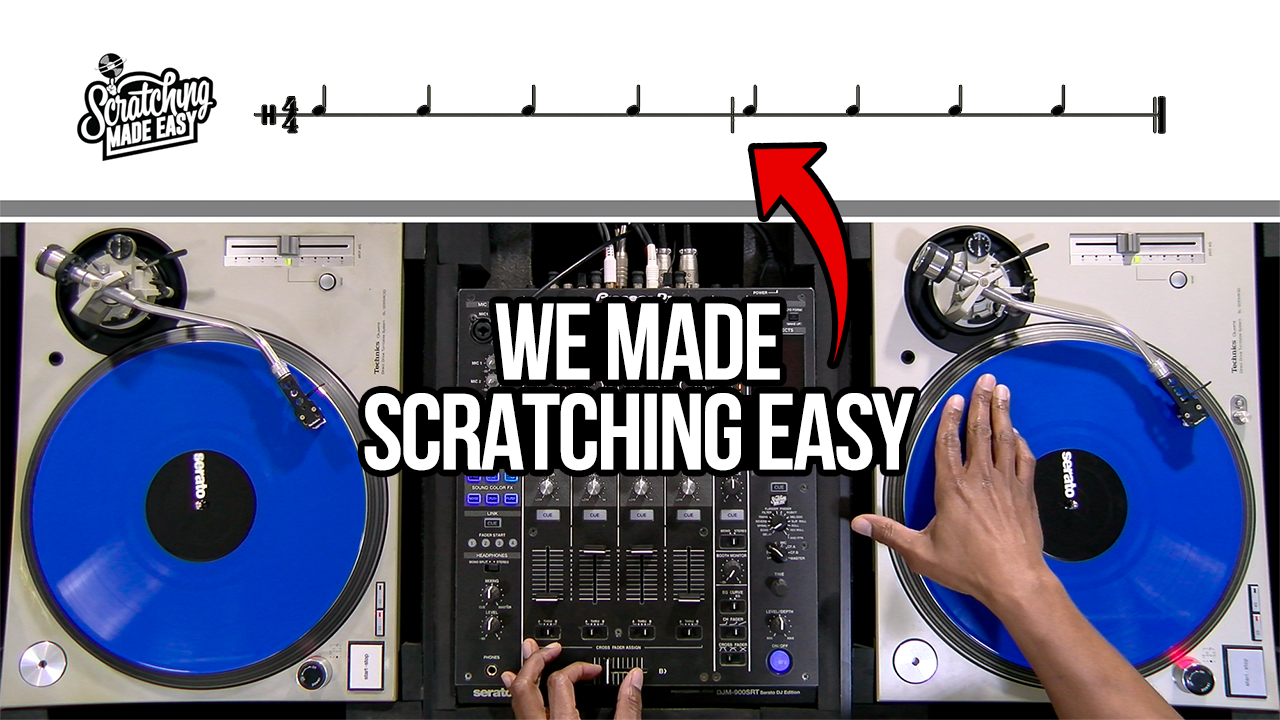Hey this is Ronin from Scratching Made Easy. In this video we are going to cover the basics of rhythm, but before we get started, let me tell you a little bit about my story, and what learning the basics has done for me. When I started out, I could mix, but I couldn’t scratch consistently. Sometimes I even had problems dropping the record on beat. Over the years, I looked for solutions, but I wasn’t able to consistently improve when it came to scratching. To make a long story short, I didn’t understand rhythm, and I had poor timing. I was finally able to overcome these obstacles and make steady and consistent progress when I was introduced to music theory. Learning music theory was the answer to my problems, and it changed the course of my life. Look, we know that you want to get scratching, but before we get there, we start need to start with the basics. If you want to be able to do this. It will be easier to achieve if we start with the basics. The basics will give you a solid foundation that you can build on, and allow you to be more creative. That being said, let’s get started.
This is a treble clef.

This is a bass clef.

And this is a neutral clef.

Clefs are placed at the beginning of the staff. We here at Scratching Made Easy use the single line staff.

Music on the staff is divided into groups called measures. The number of beats a measure can hold is determined by the time signature. The top number of the time signature tells us the number of beats allowed per measure. The bottom number tells us which note will be the pulse of this song.
 The pulse is what you bob your head to, when you listen to music. If the top number is a four, it means four beats can fit into one measure.
The pulse is what you bob your head to, when you listen to music. If the top number is a four, it means four beats can fit into one measure.

Let’s look at note values, so we understand what we just discussed. We’re going to start with the whole note. This is a whole note.

One whole note equals four beats.

When we count this rhythm, we count ONE, ONE, ONE, ONE.



 This is a half note.
This is a half note.

There are two half notes in each measure, because a half note equals two beats. When we count this rhythm, we count ONE, THREE, ONE, THREE, ONE, THREE, ONE, THREE. We only counted on beats one and three because those are the beats that we play. A half note equals two beats, so we wait for the duration of the note.

This is a half rest.

The half note and the half rest equal two beats.

Wherever there is a half rest, you should rest for two beats. When we count this rhythm, we count ONE, ONE, ONE, ONE. We only counted on beat one, because the half rest tells us to rest for two beats.

This is a quarter note.

One quarter note equals one beat.

When we count this rhythm, we count ONE, TWO, THREE, FOUR, ONE, TWO THREE, FOUR.

This is a quarter rest.

The quarter note and the quarter rest equal one beat.

Wherever there is a quarter rest, you should rest for one beat. When we count this rhythm, we count ONE, TWO, FOUR, ONE, TWO, FOUR. We didn’t count on three, because the quarter rest tells us to rest for one beat.

There you have it! That’s some of the basics in a nutshell. Be sure to check out the next video, where we’ll get you playing quarter notes. For premium content, check out our website scratchingmadeeasy.com where you’ll find our book, Scratching Made Easy Turntable Method Book One, a Guide to Scratching, as well as extended premium lessons. Thanks for watching. I’ll see you next time! Peace!


